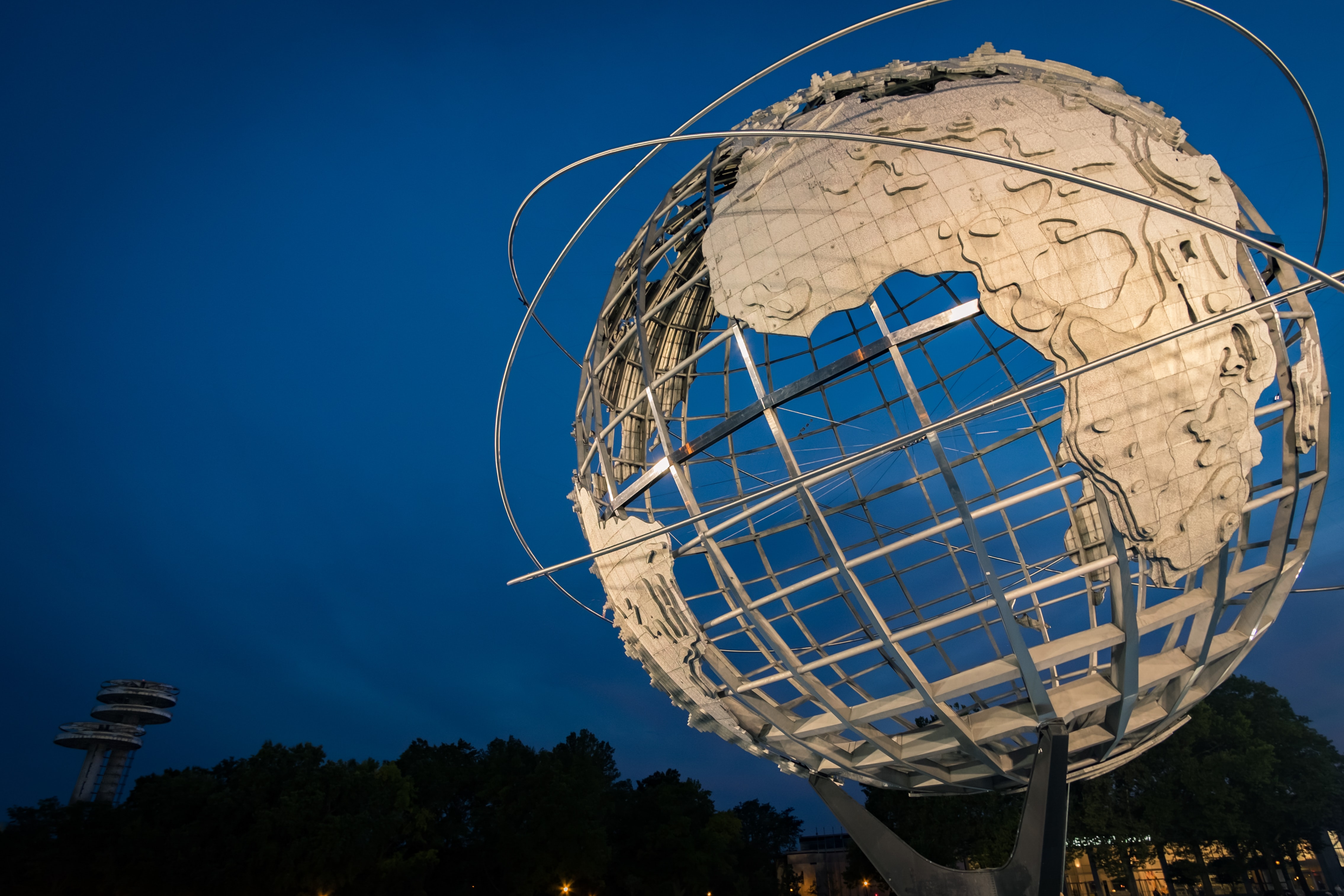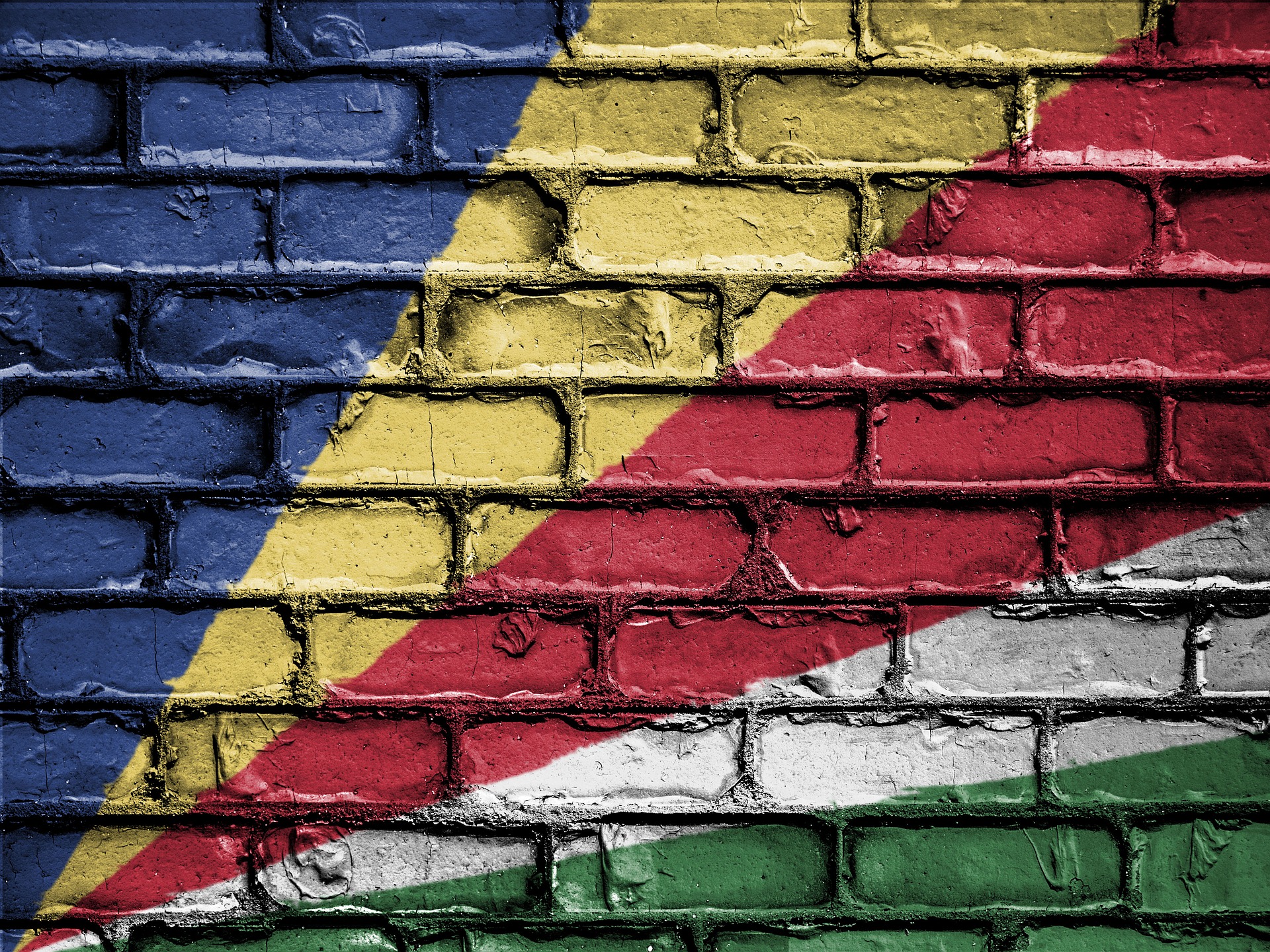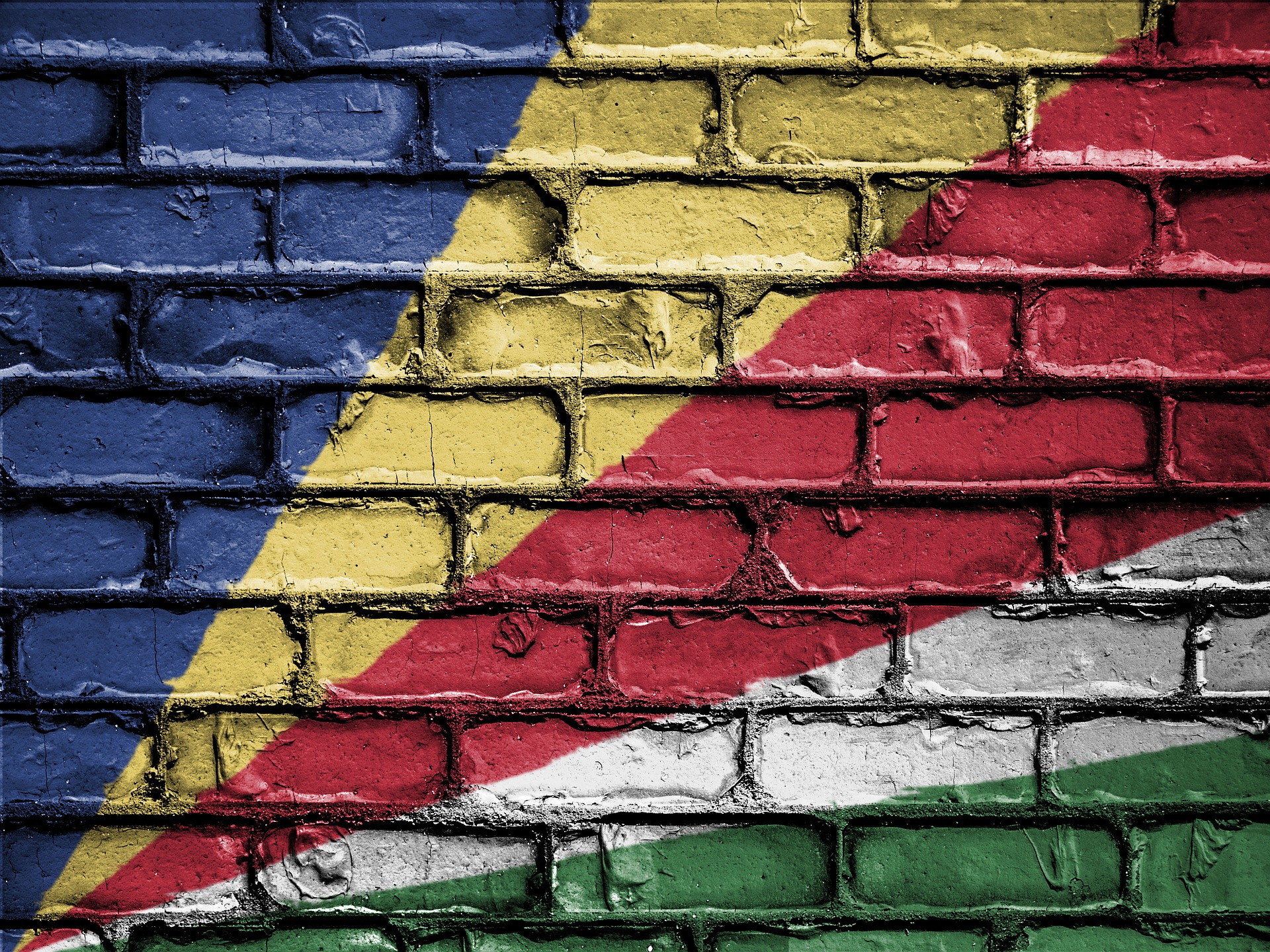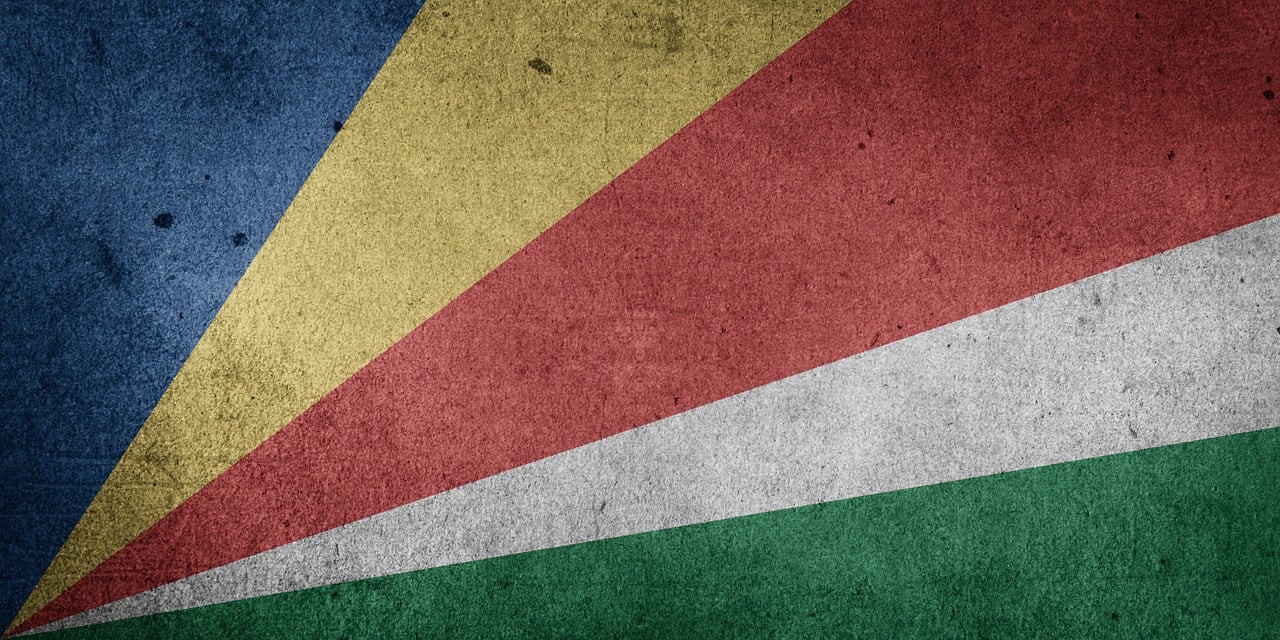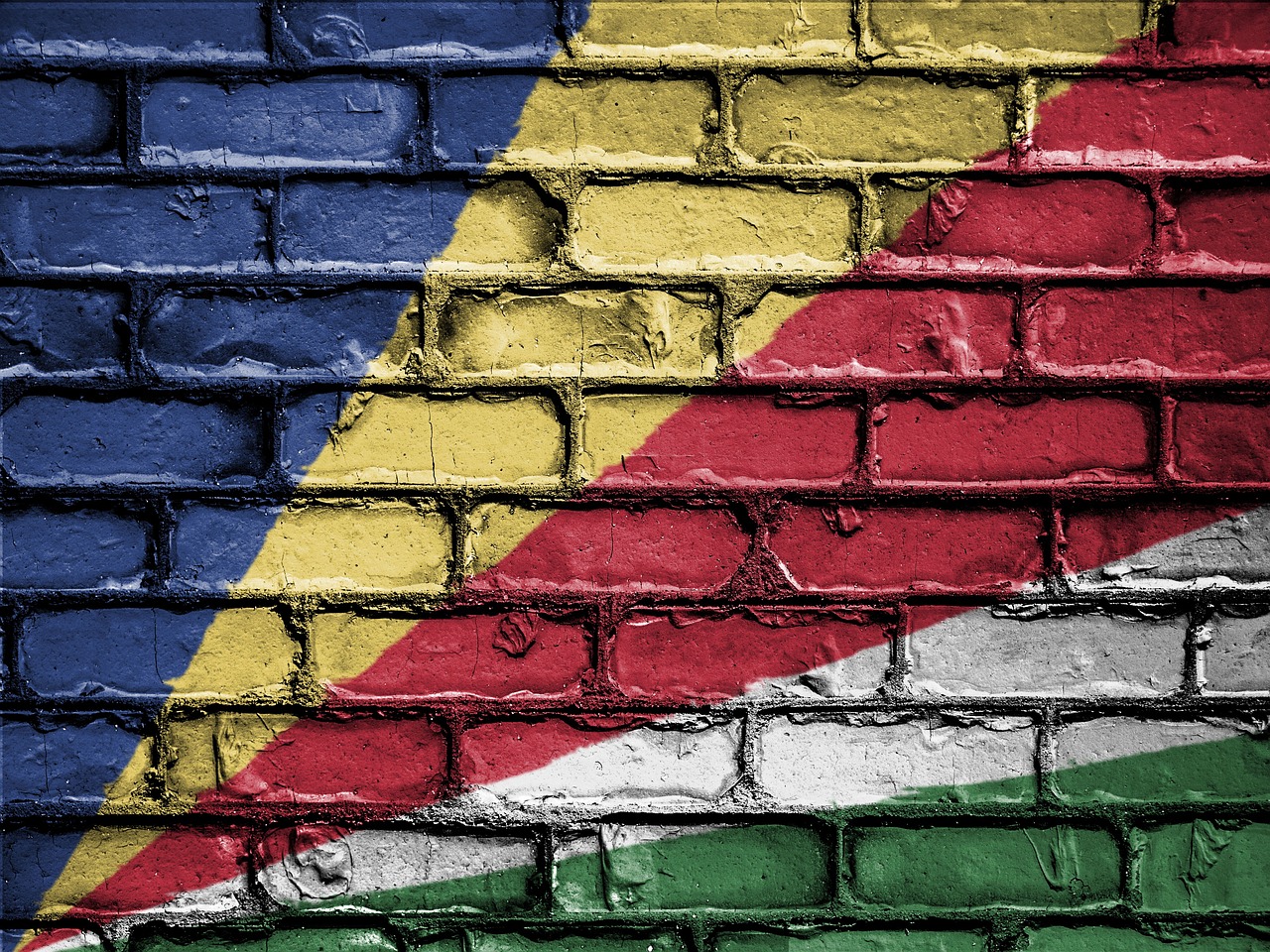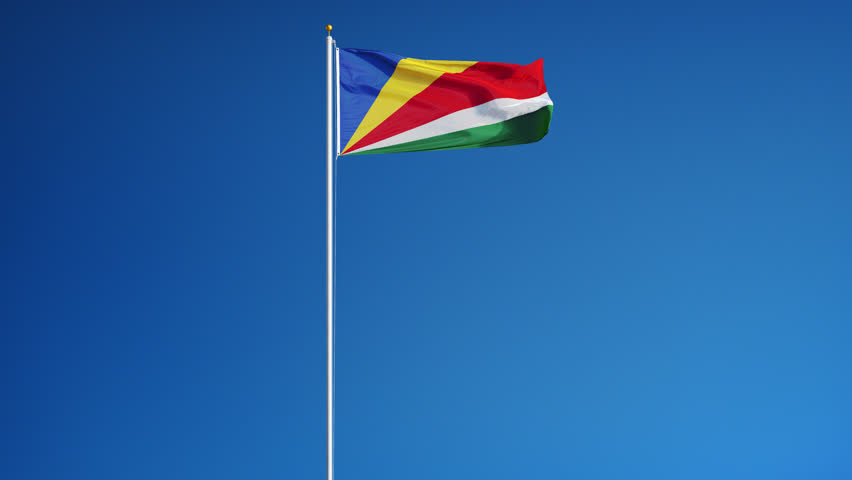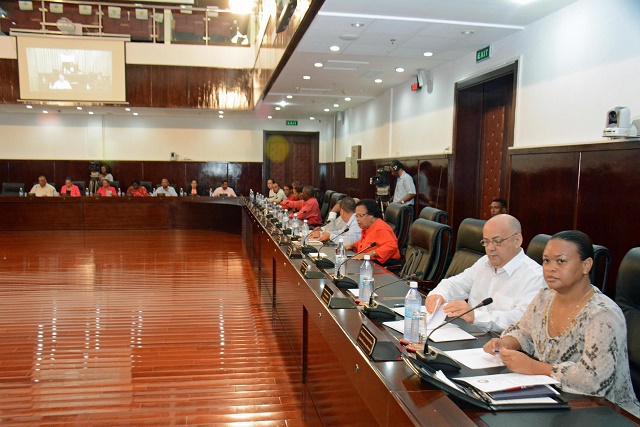Seychelles
Seychelles (pronounced /se?'??l/ or /se?'??lz/ in English and IPA: [se??l] in French), officially the Republic of Seychelles (French: République des Seychelles; Creole: Repiblik Sesel), is an archipelago nation of 115 islands in the Indian Ocean, some 1,500 kilometres (930 mi) east of mainland Africa, northeast of the island of Madagascar. Other nearby island countries and territories include Zanzibar to the west, Mauritius and Réunion to the south, Comoros and Mayotte to the southwest, and the Suvadives of the Maldives to the northeast. Seychelles has the smallest population of any other state of the African continent.
* 1 History
* 2 Politics
* 3 Subdivisions
* 4 Geography
* 5 Economy
* 6 Demographics
* 7 Culture
* 8 Flora and fauna
* 9 Media and telecommunications
* 10 References
* 11 Further reading
* 12 External links
<h2>History</h2>
Main article: History of Seychelles
Please help improve this section by expanding it. Further information might be found on the talk page. (November 2008)
<h2>Politics</h2>
Main article: Politics of Seychelles
State House, Victoria - the seat of the President
The Seychelles president, who is both head of state and head of government, is elected by popular vote for a five-year term of office. The previous president, France Albert René, first came to power in a coup d'état in 1978, one year after independence. He was democratically elected after the constitutional reforms of 1992. He stood down in 2004 in favour of his vice-president, James Michel, who was re-elected in 2006. The cabinet is presided over and appointed by the president, subject to the approval of a majority of the legislature.
The unicameral Seychellois parliament, the National Assembly or Assemblée Nationale, consists of 34 members, of whom 25 are elected directly by popular vote, while the remaining 9 seats are appointed proportionally according to the percentage of votes received by each party. All members serve five-year terms.
Politics is a topic of hot and steamy debate in the country - The main rival parties are the Seychelles People's Progressive Front (SPPF) and the Seychelles National Party (SNP). Since the inception of politics in the early sixties, politics has been an integral part of the Seychellois lives. The range of opinion spans socialist and liberal democrat ideology.
The Seychelles are part of the Indian Ocean Commission (IOC), La Francophonie (the union of French Speaking countries) and Commonwealth organisation.
<h2>Subdivisions</h2>
Main article: Districts of Seychelles
Seychelles is divided into twenty-five administrative regions that comprise all of the inner islands. Eight of the districts make up the capital of Seychelles and are reffered to as Greater Victoria. While another 14 districts are considered the rural part of the main island of Mahé with two districts on Praslin and one on La Digue which also includes respective satellite islands. The rest of the Outer Islands are not considered part of any district.
<h2>Geography</h2>
Main article: Geography of Seychelles
Dense forests of Mahé Island.
An island nation, the Seychelles is located in the northeast of Madagascar and about 1,600 km (1,000 mi) east of Kenya. The number of islands in the archipelago is often given as 115 but the Constitution of the Republic of Seychelles lists 155. The islands as per the Constitution are divided into various groups as follows.
There are 42 granitic islands, in descending order of size: Mahé, Praslin, Silhouette, La Digue, Curieuse, Félicité, Frégate, St. Anne, North, Cerf, Marianne, Grand Sœur,Thérèse, Aride, Conception,Petite Sœur, Cousin, Cousine, Long, Récif, Round (Praslin), Anonyme, Mamelles, Moyenne, Ile aux Vaches Marines, L'Islette, Beacon (Ile Sèche), Cachée, Cocos, Round (Mahé), L'Ilot Frégate, Booby, Chauve Souris (Mahé),Chauve Souris (Praslin), Ile La Fouche, Hodoul, L'Ilot, Rat, Souris, St. Pierre (Praslin),Zavé, Harrison Rocks (Grand Rocher).
There are two coral sand cays north of the granitics: Denis, Bird.
There are two coral islands south of the granitics: Coëtivy, Platte.
There are 29 coral islands in the Amirantes group, west of the granitics: Desroches, Poivre Atoll (comprising 3 islands : Poivre, Florentin and South Island), Alphonse, D'Arros, St. Joseph Atoll (comprising 14 islands: St. Joseph Ile aux Fouquets, Ressource, Petit Carcassaye, Grand Carcassaye, Benjamin, Bancs Ferrari, Chiens, Pélicans, Vars, Ile Paul, Banc de Sable, Banc aux Cocos and Ile aux Poules), Marie Louise, Desnoeufs, African Banks (comprising 2 islands: African Banks and South Island), Rémire, St. François, Boudeuse, Etoile, Bijoutier.
There are 13 coral islands in the Farquhar Group, south-south west of the Amirantes: Farquhar Atoll (comprising 10 islands: Bancs de Sable Déposés Ile aux Goëlettes Lapins Ile du Milieu North Manaha South Manaha Middle Manaha North Island and South Island), Providence Atoll (comprising two islands: Providence and Bancs Providence) and St Pierre.
Berjaja Mahé Beach
Berjaja Mahé Beach
There are 67 raised coral islands in the Aldabra Group, west of the Farquhar Group: Aldabra Atoll (comprising 46 islands: Grande Terre, Picard, Polymnie, Malabar, Ile Michel, Ile Esprit, Ile aux Moustiques, Ilot Parc, Ilot Emile, Ilot Yangue, Ilot Magnan, Ile Lanier, Champignon des Os, Euphrate, Grand Mentor, Grand Ilot, Gros Ilot Gionnet, Gros Ilot Sésame, Heron Rock, Hide Island, Ile aux Aigrettes, Ile aux Cèdres, Iles Chalands, Ile Fangame, Ile Héron, Ile Michel, Ile Squacco, Ile Sylvestre, Ile Verte, Ilot Déder, Ilot du Sud, Ilot du Milieu, Ilot du Nord, Ilot Dubois, Ilot Macoa, Ilot Marquoix, Ilots Niçois, Ilot Salade, Middle Row Island, Noddy Rock, North Row Island, Petit Mentor, Petit Mentor Endans, Petits Ilots, Pink Rock and Table Ronde), Assumption, Astove and Cosmoledo Atoll (comprising 19 islands: Menai, Ile du Nord (West North), Ile Nord-Est (East North), Ile du Trou, Goëlettes, Grand Polyte, Petit Polyte, Grand Ile (Wizard), Pagode, Ile du Sud-Ouest (South), Ile aux Moustiques, Ile Baleine, Ile aux Chauve-Souris, Ile aux Macaques, Ile aux Rats, Ile du Nord-Ouest, Ile Observation, Ile Sud-Est and Ilot la Croix).
For interactive galleries of the of the extraordinary beauty of the Seychelles see http://www.seychelles.travel/en/interactive_gallery/index.php & http://www.seychelles.cc/html/photos1001.html
<h2>Economy</h2>
Main article: Economy of Seychelles
Since independence in 1976, per capita output has expanded to roughly seven times the old near-subsistence level. Growth has been led by the tourist sector, which employs about 30% of the labour force and provides more than 70% of hard currency earnings, and by tuna fishing. In recent years the government has encouraged foreign investment in order to upgrade hotels and other services. These incentives have given rise to an enormous amount of investment in real estate projects and new (mostly 5 star) resort properties. Hilton, Four Seasons and Banyan Tree are all new entrants to Seychelles. Development projects projected in the hundreds of millions of dollars each are in the beginning stages for Emirates Airlines, Qatar Airlines, Raffles, Shangri-La, etc. Other private developments such as Ile Aurore, Per Aquam and Eden Island are projected at over $2 billion.
Coconut oil making in the early 1970s
At the same time, the government has moved to reduce the dependence on tourism by promoting the development of farming, fishing, small-scale manufacturing and most recently the offshore sector. The vulnerability of the tourist sector was illustrated by the sharp drop in 1991-1992 due largely to the country's significantly overvalued exchange rate and the Gulf War, and once again following the September 11, 2001 attacks on the United States. Other issues facing the government are the curbing of the budget deficit, including the containment of social welfare costs, and further privatisation of public enterprises. The government has a pervasive presence in economic activity, with public enterprises active in petroleum product distribution, insurance (has now been privatized), banking (is being privatized very soon), imports of basic products (now being privatized), telecommunications (4 private ISP/telecom companies), and a wide range of other businesses. Beginning at the turn of the millennium the Seychelles Petroleum Company (SEPEC) started to develop the first fleet of modern Petroleum double-hull tankers (five vessels), which was completed by late 2007/early 2008 with the possibility to build more in the near future. The Seychelles President claims that this has opened the door to a new industry for his country and encouraged economic growth by further removing over-reliance on traditional trades like fisheries and tourism which is now falling rapidly as the country's main income but nevertheless, has experienced significant growth in recent years.
Growth slowed in 1998–2001, due to sluggish tourist and tuna sectors. Also, tight controls on exchange rates and the scarcity of foreign exchange have impaired short-term economic prospects. The black market value of the Seychellois rupee is anywhere from two thirds to one half the official exchange rate. The next few years were also a bit slow due to the worldwide economic downturn and the fear of flying brought on by September 11, 2001. More recently though, tourism has roared back at a record pace setting successive records in 2006 and again in 2007 for number of visitors. The increased availability of flights to and from the archipelago due in part to new entrants Emirates and Qatar airlines is also beginning to show. New 5 star properties and the devaluation of the currency by nearly 33% by the Seychelles Government is having a positive influence on the tourism sector as well.
Both at official exchange rates and at purchasing power parity (PPP), Seychelles remains the richest territory in Africa in terms of GDP per capita (US$9,440.095 at real exchange rates and US$17,560.062 at PPP 2008 estimate),[2] Contrary to what was cited before in terms of the wealthiest African state it is both inappropriate and misleading to compare the Seychelles economy to the Indian ocean island of Reunion which is part of France, thus economically depend on the French income and budget (it also has the Euro as currency). The Seychelles is a totally independent state generating its own income.[3] Because of economic contraction (the economy declined by about 2% in 2004 and 2005 and lost another 1.4% in 2006 according to the IMF) the country was moving downwards in terms of per capita income; however, the economy came roaring back in 2007 growing by 5.3% due in part to the record tourism numbers, but also the booming building and offshore industries which also continue to set records. IMF has forecast further growth in 2008 with continuing increase in the GDP per capita. (See footnote and [1].
It is important to note that Seychelles is, per capita, the most highly indebted country in the world according to the World Bank, with total public debt around 122.8% of GDP. Approximately two thirds of this debt is owed domestically, with the balance due to multilaterals, bilaterals, and commercial banks. Current external debt is estimated at 35.5% according to the IMF (2007). The country is in arrears to most of its international creditors and has had to resort to pledged commercial debt to continue to be able to borrow. This high debt burden is a direct consequence of the overvalued exchange rate — in essence, the country is living beyond its means, and financing its lifestyle by borrowing domestically and internationally.
New detailed studies and exploration show that the Seychelles potentially have large off-shore petroleum reservoirs which are yet to be discovered.
Seychelles is the smallest nation in the world issuing its own currency (i.e., not pegged to a foreign currency and not shared with any other country).
<h2>Demographics</h2>
Victoria, Seychelles.
Main article: Demographics of Seychelles
See also: Indo-Seychellois, Sino-Seychellois, Seychellois Creole People, Seychellois Creole, and Franco-Seychellois
As the islands of the Seychelles had no indigenous population, the current Seychellois are composed of people who have immigrated to the island. The largest ethnic groups are those of French, African, Indian, and Chinese descent. French and English are official languages along with Seychellois Creole, which is primarily based upon French. Most Seychellois are Christians; the Roman Catholic Church is the main denomination.
<h2>Culture</h2>
See also: Religion in Seychelles, Women in Seychelles, and Music of Seychelles
Seychellois people after fishing.
Seychellois society is essentially matriarchal.[4][5] Mothers tend to be dominant in the household, controlling most current expenditures and looking after the interests of the children.[4] Unwed mothers are the societal norm, and the law requires fathers to support their children.[5] Men are important for their earning ability, but their domestic role is relatively peripheral.[4] Older women can usually count on financial support from family members living at home or contributions from the earnings of grown children.[4] The state however, provides one of the best pension schemes in the developing world, which can rival many advanced nations and the country provides an unconditional social care for its most vulnerable (i.e. orphans, aging and disabled population).[citation needed]
The famous clock tower in the centre of Victoria, capital of Seychelles.
The music of Seychelles is diverse. The folk music of the islands incorporates multiple influences in a syncretic fashion, including English contredanse, polka and mazurka, French folk and pop, sega from Mauritius and Réunion, taarab, soukous and other pan-African genres, and Polynesian, Indian and Arcadian music. A complex form of percussion music called contombley is popular, as is Moutya, a fusion of native folk rhythms with Kenyan benga developed by Ton Pa.
As of 1992[update], some ninety percent of the population was Roman Catholic and approximately seven percent Anglican. Other religions have been introduced with Islam being one of the fastest growing. Traditionally, despite a greater connection with Great Britain ( i.e. in Education, which follows the GCSE and 'A' (advanced) Level curriculum and have a branch of The University of Manchester as one of its highest Educational Institutions and on many aspects of the Law) a British 'Sunday telegraph' travel journalist and many other notable foreign observers has stated that "the culture remains emphatically French" and about 70% of the population have a French sounding Family name, compared with only about 20% English sounding family names, the two are often mixed with the First name, such that you get an English first name and a French family name or vice-versa e.g. Jean-pierre Kingsmith. Most people are of mixed origins often of White Europeans with Black Africans, where the whites are mainly French and the Blacks are mainly East Africans.
<h2>Flora and fauna</h2>
Main article: Flora and fauna of Seychelles
Coco de Mer (Praslin)
With very strict environment legislations, every tourism project must have an environmental review and lengthy consultations with the public and conservationists. The Seychelles is a world leader in sustainable tourism. The end result of this sustainable development is a steady intact natural environment, which attracts financially strong visitors (150 000 per year in 2007) rather than short term mass tourism. Since 1993 a law guarantees the citizens right to clean environment and at the same time obligate them to protect this environment. The country holds a record for the highest percentage of land under natural conservation of nearly 50% of the total land area of the Seychelles.
Anse Source d' Argent
In common with many fragile island ecosysytems, the early human history of Seychelles saw the loss of biodiversity including the disappearance of most of the giant tortoises from the granitic islands, felling of coastal and mid-level forests and extinction of species such as the chestnut flanked white eye, the Seychelles Parakeet and the saltwater crocodile. However, extinctions were far fewer than on other islands such as Mauritius or Hawaii, partly due to a shorter period of human occupation (since 1770). The Seychelles today is known for success stories in protecting its flora and fauna.
The granitic islands of Seychelles are home to about 75 endemic plant species, with a further 25 or so species in the Aldabra group. Particularly well-known is the Coco de mer, a species of palm that grows only on the islands of Praslin and neighbouring Curieuse. Sometimes nicknamed the 'love nut' because of its suggestive shape, the coco-de-mer is the world's largest seed. The jellyfish tree is to be found in only a few locations today. This strange and ancient plant has resisted all efforts to propagate it. Other unique plant species include the Wrights Gardenia found only on Aride Island Special Reserve.
Giant Tortois<h2>$1</h2>
The giant tortoises from Aldabra now populate many of the islands of the Seychelles. The Aldabra population is the largest in the world. These unique reptiles can be found even in captive herds. It has been reported that the granitic islands of Seychelles supported distinct species of Seychelles giant tortoises, the status of the different populations is currently unclear.
Seychelles hosts some of the largest seabird colonies in the world. Islands such as Bird, Aride Island, Cousin, Aldabra and Cosmoledo host many species of seabirds including the sooty tern, fairy tern, white-tailed tropicbird, noddies and frigatebirds. Aride Island has more species of seabird and greater numbers than the other 40 granite islands combined including the world's largest colony of Audubon's Shearwater and Lesser Noddy.
The marine life around the islands, especially the more remote coral islands, can be spectacular. More than 1000 species of fish have been recorded. Since the use of spearguns and dynamite for fishing was banned through efforts of local conservationists in the 1960s, the wildlife is unafraid of snorkelers and divers. Coral bleaching in 1998 has unfortunately damaged most reefs, but some reefs show healthy recovery (e.g. Silhouette Island). The reefs comprise a vast selection of soft corals and hard corals alike. There is great diving and snorkeling opportunity. The taking of marine turtles was completely stopped in 1994, turtle populations are now recovering on several protected islands, most notably Cousin Island, Aride Island, Silhouette Island and Aldabra. However, they continue to decline at unprotected sites. The use of gill nets for shark fishing as well as the practice of shark finning are now banned.

